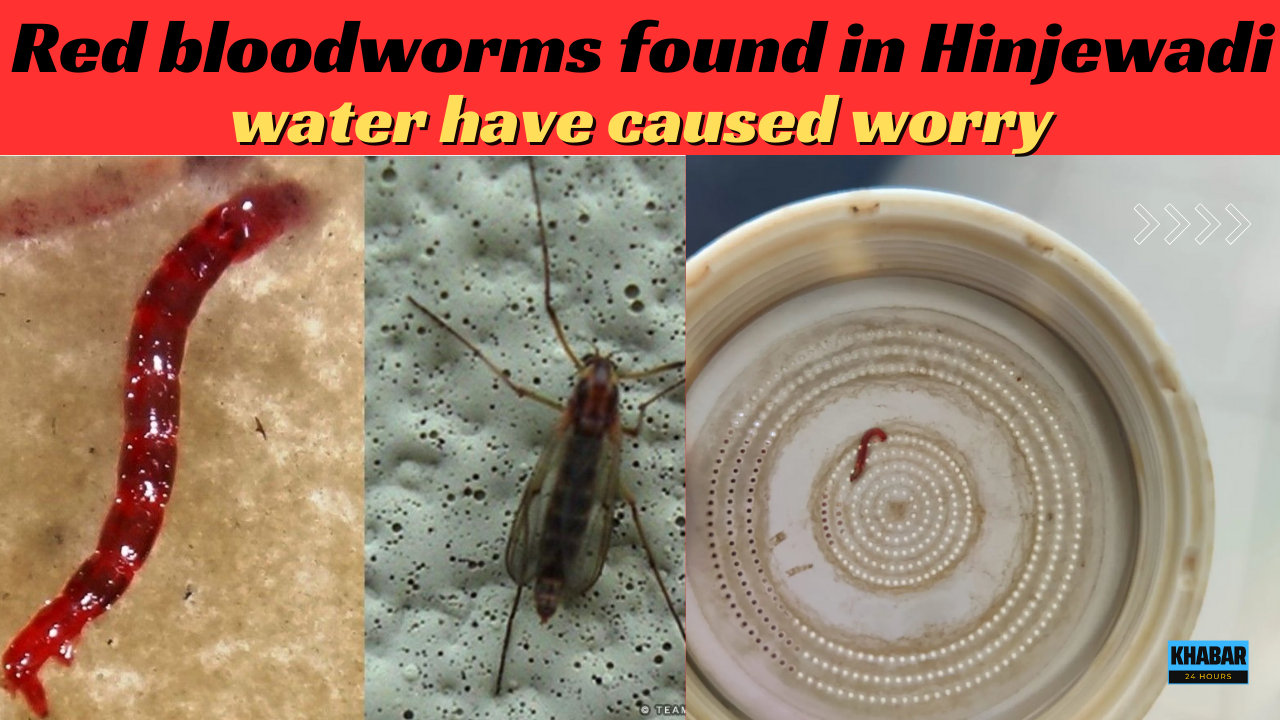
Red Bloodworm Infestation in Pune’s Hinjewadi: A Cause for Concern
Residents of the Blue Ridge township in Hinjewadi were shocked to discover numerous red bloodworms in their drinking water. These worms were found stuck on the sediment filter of a resident’s purifier, raising alarm among the community.
Potential Spread of Chironomid Swarms
Ecologists interviewed by TOI suggested that recent sightings of Chironomid swarms in areas like Kharadi and Mundhwa, mistaken by citizens as “mosquito tornadoes,” might indicate a broader presence of red bloodworms in other localities. It is suspected that these Chironomids may have laid eggs in water sources within societies, leading to their proliferation.
Contributing Factors to Infestation
The degradation of riparian ecology along the Mula-Mutha stretches has been significantly influenced by encroachments, concreting, asphalting work, and the use of pavers as part of the Riverfront Development project. According to ecologist Jaideep Baphna, the presence of predators in a thriving riparian zone usually helps control the population of such insects.
Understanding Chironomid Behavior
Chironomid larvae, also known as “bloodworms” in their larval stage, are closely related to mosquitoes. Freshwater biologist Sameer Padhye explained that while Chironomids are a natural part of many freshwater ecosystems, their numbers are typically low in cleaner water bodies due to various factors.
Investigation and Mitigation
Padhye emphasized the importance of investigating the presence of Chironomid larvae in drinking water. Studying basic environmental variables such as phosphates, nitrates, and dissolved oxygen, along with actual sampling, is crucial to determine their densities and the root cause of this occurrence.

Impact of Development Projects
Regarding the Mula Mutha Riverfront Development Project, Padhye highlighted increasing pollution as a major concern, leading to the higher growth of hyacinth and water lettuce, which reduce river flow. Stagnant water bodies with high nutrient levels provide an ideal environment for these insects to thrive. Loss of riparian vegetation could also contribute to the observed swarms, though further testing is needed to confirm this hypothesis.
Residents’ Initiative to Monitor River Health
Residents are gearing up to monitor the health of the river stretch adjacent to the township. Their plan involves conducting regular inspections along various points of the river to detect any signs of sewage contamination. Additionally, they intend to engage with the Hinjewadi gram panchayat to facilitate comprehensive water quality assessments and investigate alternative water sources.


